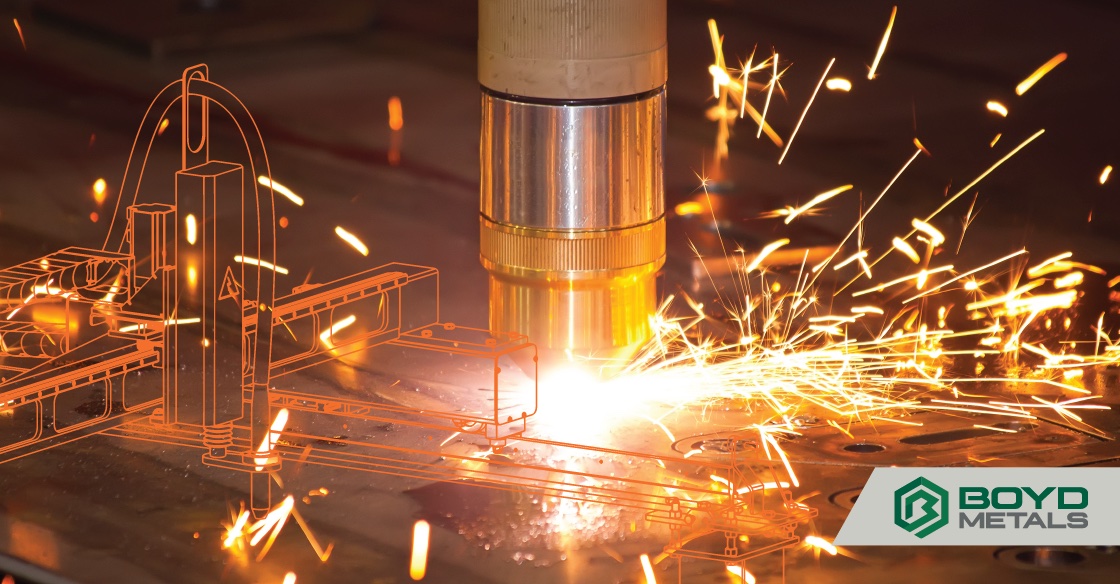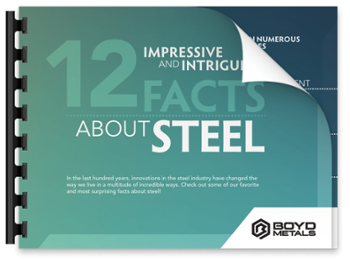Whether you are a worker in a shipyard constructing cargo ships or an artist trying to turn your latest vision into a metal masterpiece, chances are you are going to be utilizing plasma cutting at some point during the process.
Designed for fast and precise cutting, it's no surprise that plasma cutting has become so widely used worldwide. Chances are that you use products that were made in part with plasma cutting every day.
So, what is plasma cutting? And how exactly does it work?
What is Plasma?
First, you need to understand the basics of plasma cutting. Let's begin by answering a simple question: What is plasma?
Not to be confused with the clear fluid in blood in which fat globules are suspended (whatever that means). The plasma we are referring to is an ionized gas – a gas that had been energized to the point that the electrons break free from their atoms but still travel with the nucleus.
This energized gas is plasma. Plasmas are referred to as the fourth state of matter, alongside the other three well-known and widely taught states. That’s right, the states of matter are, in fact: solid, liquid, gas and PLASMA.
Interestingly enough, according to science, plasmas are actually the most common state of matter in the universe! We rely pretty heavily on plasma here on Earth. I’m sure you’re familiar with the sun. Well, our big yellow friend in the sky, along with most other stars, is actually a giant ball of plasma. Kind of cool, right?
There are several different ways that a gas can become a plasma, but, it always includes pumping the gas full of energy. In this case, a spark is a very effective source of energy. When we pass pressurized gasses (such as oxygen, nitrogen, argon, or even shop air) through a large spark, it ionizes the gas and creates a controlled stream of plasma.
You might be asking yourself, “how do we use a gas to cut through some of the hardest materials known to man?” Well, plasma torches can reach a staggering 40,000° F almost instantly. A stream of plasma at that temperature can quickly and easily pass through most materials.
I give you...
the PLASMA TORCH!
Every plasma cutting system is made up of these three components:
- Power Supply - The plasma power supply is responsible for sustaining the plasma arc through the entire duration of a cut.
- Arc Starting Console - Or ASC creates the spark inside the plasma torch, which creates the plasma arc.
- Plasma Torch - The plasma torch provides the alignment needed for precision cutting as well as cooling the consumables.
Now that you understand what plasma is let’s move on to applying the plasma torch.
Types of Plasma Cutting
Nearly all plasma cutting systems fall under two categories: Conventional and Precision plasma systems.
Conventional Plasma Systems - Typically use shop air as the plasma gas, and the shape of the arc is determined by the nozzle on the torch. Handheld systems fall in the conventional plasma system category, as well as applications where the materials being cut have a lower tolerance. While these types are common, they are less precise than the other form of plasma cutting.
Precision Plasma Systems - Use a variety of gases such as oxygen, nitrogen, or a mix of hydrogen/argon/nitrogen to achieve optimal cuts on a wide range of conductive materials. These types of systems are CNC controlled and are designed to produce the most precise cuts achievable using plasma. The torches and the designs they cut are more complex, and the shape of the arc is constricted to add precision.
Why Use Plasma?
By this point, you should have a good understanding of what plasma is and how plasma cutting works, but that still leaves one very important question unanswered — Why?
There are plenty of other ways to cut metal - saws, lasers, waterjets, and oxy-fuel systems. We won’t go into the details of each of these specifically right now since you’ll want to use different methods for different jobs.
When making a decision on which cutting method to use, several factors come into play. It's important to consider the thickness of the material you’re cutting, the required edge quality and whether productivity or cost is more important.
The most noteworthy differences between plasma cutting and other cutting methods are time and cost. Plasma is faster than other methods, particularly when dealing with thicker materials, and recent advances in plasma-cutting technology are reducing the impact that plasma cutting has on your bottom line.
The cost of a waterjet or laser cutter is very expensive in comparison. In general, waterjet cutting cost three times as much as plasma and laser cutting can cost up to eight times as much! Plasma is a very practical cutting method, and it’s accurate enough for nearly any shape-cutting needs.
So, there you have it! The full rundown - from the science behind what plasma is, to how plasma torches work and how plasma cutting benefits you.
If it turns out that this wasn't everything you wanted to know and more, give one of our locations a call, and we'd love to talk more about how your business can take advantage of plasma cutting.
Did you find this information interesting? Check out the Boyd Metals Blog page for more interesting info about the metals industry, and don't forget to check out this FREE download with facts about steel!
Steel is an amazing, multifaceted material that people use every day, often without even considering its importance. For your entertainment and enlightenment, we have put together a free guide: 12 Impressive and Intriguing Facts About Stainless Steel!
We hope you find this information
as riveting as we do!




